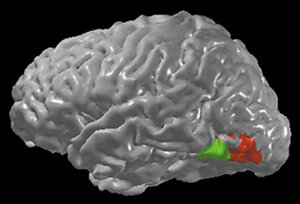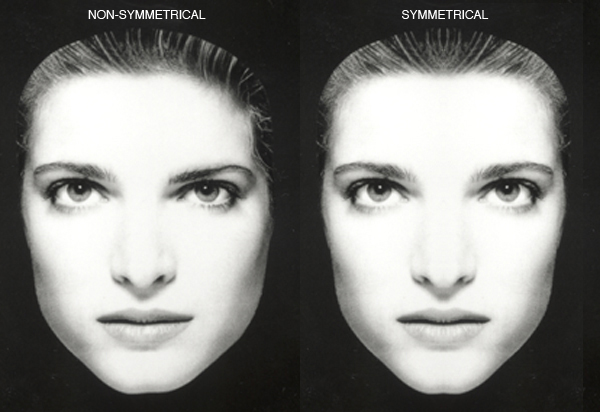

Do you remember being in high school or college and noticing a group of females who had their own special group? More than likely they were the "popular" girls and the most pretty and conceited. When these kinds of people are depicted in movies they often get their egos crushed by plain classmates with better personalities. But, unfortunately, in real life this is unlikely. Being "beautiful" has its rewards and these usually continue throughout adulthood.

Studies show attractive people prefer to associate with others like themselves.
The secret of beauty and attractiveness has been a quest of humans for as long as we have been civilized. Many women (and some "metrosexual" men) spend up to one-third of their income on looking good. Why?
Besides being popular, beautiful people get special attention from teachers, the legal system and employers. Good-looking people tend to make more money than their plain-Jane counterparts, according to a study by the Federal Reserve Bank of St. Louis. Researchers found that beautiful people tend to earn 5 percent more an hour than their less comely colleagues. If that weren't enough, the Fed also discovered a "plainness penalty," punishing below-average-looks with earnings of 9 percent less an hour.
While we instinctively know what appeals to our own sense of beauty -- we know it when we see it -- defining what determines attractiveness is not always easy. In frustration, we often give up and claim that "beauty is in they eye of the beholder." But is beauty really a personal phenomenon?
Recent studies have shown that the secret of beauty may at last be understood. It seems that attractiveness may be hard wired in our brains.
Experiments designed to measure attractiveness usually involve showing a series of images of human faces and asking subjects to rate their visual appeal. Surprisingly, people from a variety of different ages, races and cultures agree on what is and isn't beautiful. Babies as young as 3 months can identify and prefer faces that most adults would deem beautiful. Europeans can pick out the same beautiful Japanese faces as Japanese subjects; Japanese can agree on which European faces another Europeans will view as beautiful. In fact, humans can even agree on the attractiveness of monkey faces, thus ruling out most unique racial, cultural and even species influences. So what's going on?
 Facial recognition is a complex process. Only recently, with the need to spot criminals and terrorists, computer facial recognition programs have been developed to analyze the subtle variations of such things as the space between our eyes, the size of our noses and the proportions of our facial features. Scientists have discovered certain mathematical facial proportions that identify beautiful people. But is there more to beauty than the mere arrangement of eyes, noses and chins?
Facial recognition is a complex process. Only recently, with the need to spot criminals and terrorists, computer facial recognition programs have been developed to analyze the subtle variations of such things as the space between our eyes, the size of our noses and the proportions of our facial features. Scientists have discovered certain mathematical facial proportions that identify beautiful people. But is there more to beauty than the mere arrangement of eyes, noses and chins?
Our brains seem to do much more than simply recognize a beautiful face. Most people can assess emotions, personality traits and fertility -- as well as beauty -- almost instantaneously. In fact, the human brain has special part called the fusiform, located in the back of the head near the spine. It's the same neural pathway needed to recognize faces of family, friends and people we have met. When it's damaged, the patients cannot recognize anyone, even people they has just met. Also, in experiments, they cannot discriminate between photographs of plain and beautiful faces.
Studies show that when we recognize a face as "beautiful" we are actually making a judgement about the health and vitality of that individual. We interpret facial symmetry (the similarity of left and right halves of a face) and the smoothness of the skin to mean that a person has good genes and has been free from diseases. This is part of what we mean by "beautiful" but it is just the beginning.
Studies have shown that facial symmetry is one of the best observational indicators of good genes and healthy development and that these traits are what we mean when we say someone is attractive. Look at these examples below.

Which face do you think is more healthy?
| A non-symmetrical face, or Facial Asymmetry (FA), increases with the presence of genetic disturbances such as deleterious recessives and with homozygosity. Also, FA increases with the exposure to environmental perturbations during development (i.e. extremes in temperature and pollution). Think of Facial Asymmetry as the inability of an individual to resist the disruptions in developmental symmetry. This implies a genetic weakness and less than optimum health. Bilateral Symmetry (see image above) is thus equated with heterozygosity and resistance to infection and debilitating pathogens. Bilateral Symmetry and parasite resistance are factors that show optimum health and increase the success in intersexual and intrasexual competition. Note: The term homozygosity refers to the similarity of genetic characteristics that can cause a weakening of a species -- such as occurrs with in-breeding. Heterozygosity, on the other hand, is the result of genetic variety which is able to change and adapt to environmental conditions. The latter is believed to be more beneficial to a species. |
A plethora of recent experiments have shown that, aside from symmetry and being "healthy," men and women form opinions about attractiveness based on slightly different criteria which can change depending on such things as their age, hormones and potential for being a mate.


(ScienceDaily) -- Do personal traits predict success in school? If so, which dimension of one's outward appearance can tell the most about academic achievement?
The answers to these questions are found in a new study by researchers from the University of Miami Health Economics Research Group. The study is the first to demonstrate that non-cognitive traits play an important role in the assignment of grades in high school.
Economists have examined the role that beauty plays on the type of employment, earnings, productivity and the likelihood of politicians being elected to office, and have wondered if "beauty premiums" and "plainness penalties" in the labor market come from an accumulation of differences in attention and rewards received from teachers throughout the school years. Findings from this peer-reviewed study titled: "Effects of Physical Attractiveness, Personality and Grooming on Academic Performance in High School" will be published in the next issue of Labour Economics.
The study offers a new perspective in an area of research that until now was almost exclusively focused on adults. It examines the effect of three personal characteristics--physical attractiveness, personality and grooming--on students' grade point averages (GPA) in high school. The primary objective is to determine which aspects of these non-cognitive personal traits are more strongly linked to academic achievement, said Michael T. French, professor of health economics in the UM College of Arts and Sciences and one of the authors of the study.
"Several studies in the literature have found that physical attractiveness is significantly related to labor market earnings for men and women. Thus, we were somewhat surprised to find that physical attractiveness was not the most important non-cognitive predictor of grades," French said. "Instead grooming and personality were stronger predictors of academic success in high school for boys and girls, respectively."
Looking at GPA as a function of a long list of individual, familial, school, and environmental characteristics that are likely to affect academic performance, the researchers were able to make several significant observations, including:
Physical attractiveness has a positive effect on GPA for both genders, but only when considered alone. When physical attractiveness is considered along with grooming and personality, the positive effect of physical attractiveness on high school GPA turns negative for both genders. For male students, grooming delivers the biggest overall effect on GPA. For female students, personality is positively related to GPA. Physical appearance can be a way for adolescents to either rebel or accept adult's standards. However, whether the student is a "rebel" or a "conformist" does not have a significant independent effect on GPA. The findings suggest that some degree of teacher bias is present in favor of, or against certain types of students.
All else equal, Hispanics and African Americans have lower GPAs than whites and girls have higher GPAs than males.
Students living with a mother who attended college, those that live in a two-parent household and those attending a small school have higher GPAs than those in different circumstances. Receiving public assistance is negatively associated with GPA. In conclusion, the study posits that students may be able to "trade-off" different personal characteristics to improve academic achievement and that this trend may affect future success in college, the labor market and family formation.
Journal reference:
French et al. Effects of physical attractiveness, personality, and grooming on academic performance in high school. Labour Economics, 2009; DOI: 10.1016/j.labeco.2009.01.001